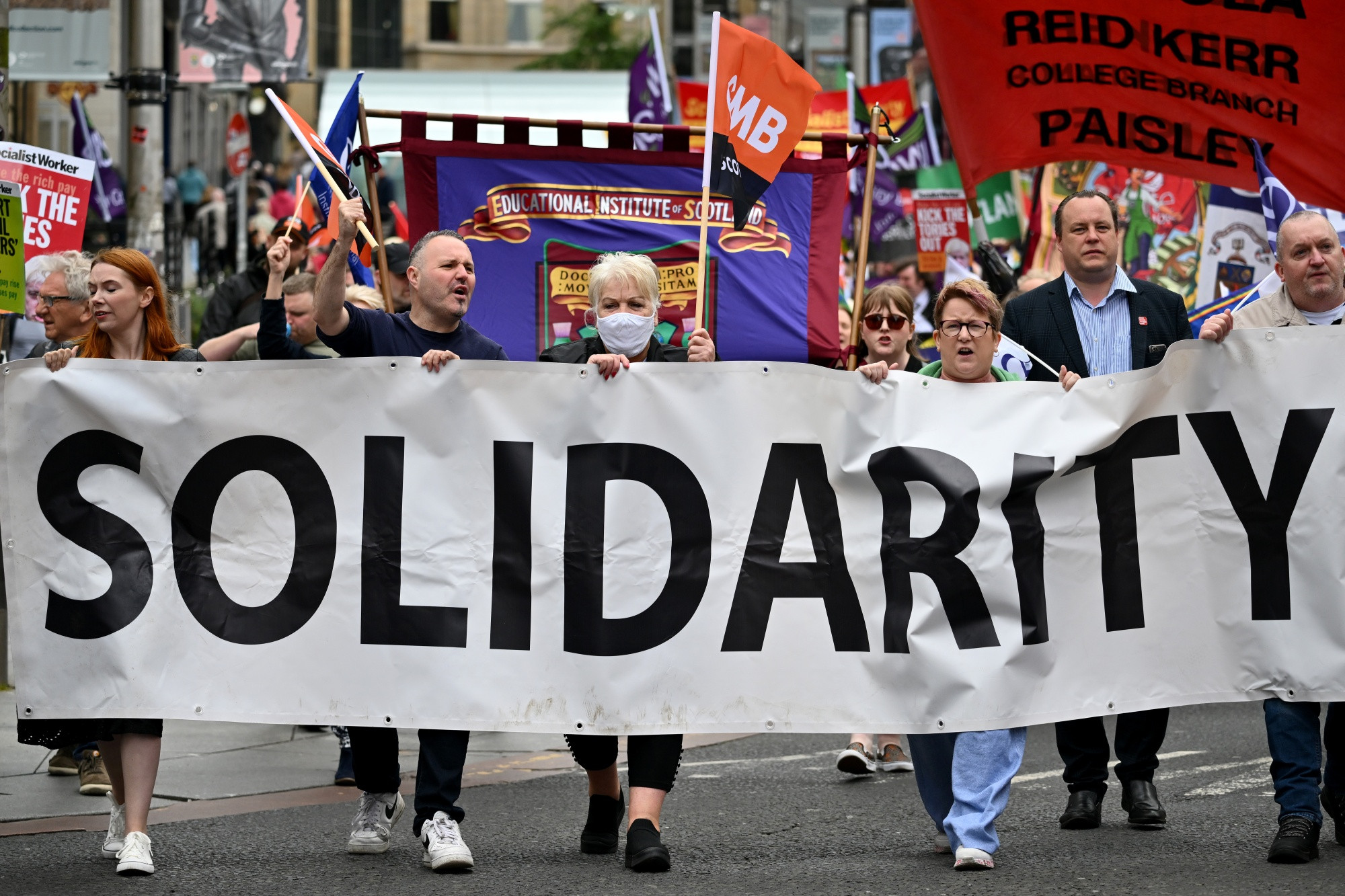As tens of thousands of people participate in Labour Day marches and events across Canada, it’s worth reflecting on the fact that workers and their unions have also been on the march against a growing cost-of-living crisis. Front-line workers, hailed as heroes during the COVID-19 pandemic, are leading a resurgence in union militancy, demanding what they’ve long been denied: fair wages, decent work, and a greater share of the profits they help to generate.
The pandemic was a turning point that revealed a stark prioritization of profits over workers’ health and safety. Those same front-line workers are now demanding their due, refusing to return to a job that offers poverty wages and next to nothing in terms of benefits. They have a renewed understanding of the value of their labour and are willing to fight for decent work, even if it means striking.
For decades, unions’ bargaining power was in decline. But that shifting political and economic landscape has provided unions with renewed leverage at the bargaining table. After years of stagnant wage increases and defensive concessionary bargaining, unionized workers in retail, transportation, and other sectors of the economy are now seeking to regain lost ground — and are increasingly willing to engage in strike action to bolster their demands.
As a result, after decades of decline, strike activity in Canada is rising. Between 2017 and 2020, there were a record low 328 strikes across Canada, compared to 1,111 and counting between 2021 and 2024. While Canada’s unions are nowhere close to reaching the record levels of strike activity witnessed in the mid 1970s, there’s no question workers are showing increased willingness to strike in support of their bargaining demands.
In short, workers are fed up. And their efforts are paying off. For years, major union wage settlements in the private sector closely reflected modest increases in inflation. Between 2015 and 2020 average annual percentage increases hovered between 1.5 and 2.2 per cent. When inflation spiked in 2021, peaking at 8.1 per cent in June 2022, unions struggled to keep up and the vast majority of workers fell behind. By the end of 2023, however, unions had made up some of the lost ground by securing real wage increases that outpaced inflation — some delivering impressive double digit hikes.
But unions are securing more than just significant wage hikes post-pandemic. In retail, for example, unions have successfully used strike actions to negotiate benefit and pension improvements, and an expansion in the number of full-time positions.
Growing Discontent and Public Support
The recent increase in strike activity also highlights the growing discontent among workers whose standard of living is deteriorating despite soaring corporate profits. While Statistics Canada tracks some measures of union militancy, such as the number and length of strikes, there are other, less visible signs of growing discontent that are not captured by these statistics. For instance, apparent increases in contract rejections, strike authorization votes, and workplace actions such as demonstrations or work-to-rule campaigns are not reflected in the data but are crucial indicators of rising worker unrest.
Striking union members are also being met with impressive levels of public support. While labour disputes often prove unpopular because they disrupt economic activity and services, consumers angry about price gouging and the rising cost of living are, in many cases, demonstrating more sympathy for the plight of unionized front-line workers than for the profit margins of giant corporations. Public support is empowering for workers and potentially gives unions more leverage at the bargaining table. This dynamic is likely most evident in the grocery sector where some of the industry’s heavy hitters have been centred out for excessive corporate greed.
The Ripple Effect of Union Wins
Union wins in collective bargaining are also fuelling efforts to organize non-union workers seeking improved terms and conditions of work, as evidenced by high-profile unionization drives at Amazon warehouses and Starbucks outlets. A poll commissioned by the Canadian Labour Congress earlier this year revealed that 62 per cent of Canadians believe belonging to a union is a good thing and 70 per cent of Canadians want governments to remove barriers to unionization.
Public support for unions is bolstered by the fact that the benefits achieved through collective bargaining often extend beyond union members, positively impacting all workers and the communities where they reside. When unions secure better pay, benefits and working conditions, it sets a competitive standard that even non-union employers must meet to retain their employees. As a result, industry-leading union contracts help elevate wages and working conditions across the board, benefiting all workers.
A New Era of Labor?
Given corporate profit margins, workers expect more than mere survival — they want fairness and opportunity. The recent uptick in union militancy is a sign that workers and their unions are prepared to assert their right to strike in pursuit of those goals.
How long this renewed determination will last is an open question, but employers shouldn’t expect the tide to subside anytime soon. Although the inflationary pressures fueling union militancy are beginning to ease, most of the contracts currently being negotiated are designed to make up for the years when inflation significantly outpaced wage increases. There’s lots of ground to make up on this front. With workers feeling the squeeze after years of stagnant pay and rising costs, the momentum behind these efforts could well carry forward, even if inflation rates continue to stabilize.
As the economic landscape continues to shift, one thing is clear: workers are increasingly unwilling to accept the status quo. The recent uptick in union militancy signals a growing recognition of the power of collective action and the importance of decent work for all.
Larry Savage is a Professor in the Department of Labour Studies at Brock University and co-author with Stephanie Ross of “Shifting Gears: Canadian Autoworkers and the Changing Landscape of Labour Politics,” published by University of British Columbia Press.


















